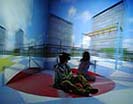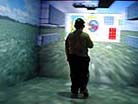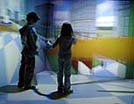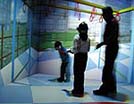For example, the swings, initially cover a 3 x 4 area, that is twelve red blocks. 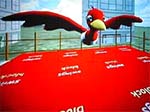 The children are told by the red bird to increase the area by comparing two fractions (the fractions 1/3 and 1/4) and choosing the number that represents the larger amount. The children are told by the red bird to increase the area by comparing two fractions (the fractions 1/3 and 1/4) and choosing the number that represents the larger amount.
“Hi, I am the red bird.
The swings are not big enough and we want to give them as much area as possible.
We can make them bigger by 1/3 of their current space or bigger by 1/4, whichever covers more ground.
You have to decide!”
In this case, the fraction 1/3 which results in 4 blocks must be chosen and the 4 blocks must be added to the swings area, by picking blocks from the central pool and placing them on the 4 tiles that need to be covered.
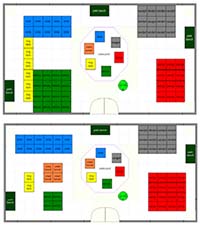 The system provides both visual and audio feedback to respond to The system provides both visual and audio feedback to respond to  the children’s activity, including feedback on the rules of the task provided by engaging virtual characters, such as an owl and six birds. the children’s activity, including feedback on the rules of the task provided by engaging virtual characters, such as an owl and six birds.
When the correct area is formed, the user can press a button to switch to “playground mode”, and immediately see the playground element appear correctly. If the area is not formed correctly, then the playground element will not appear and the user will be prompted to reconsider her actions. 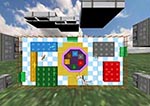
In addition to the switch between block mode (in which construction takes place) and playground mode, the system provides a number of other tools to facilitate the user’s activity, such as the ability to switch between multiple views (ground view or top-down view).
|

